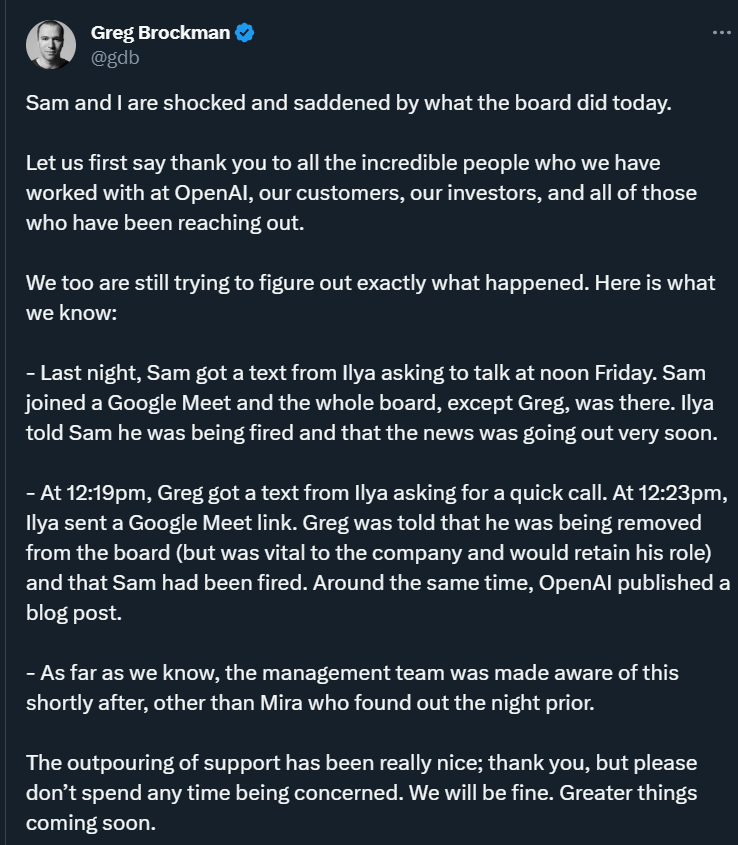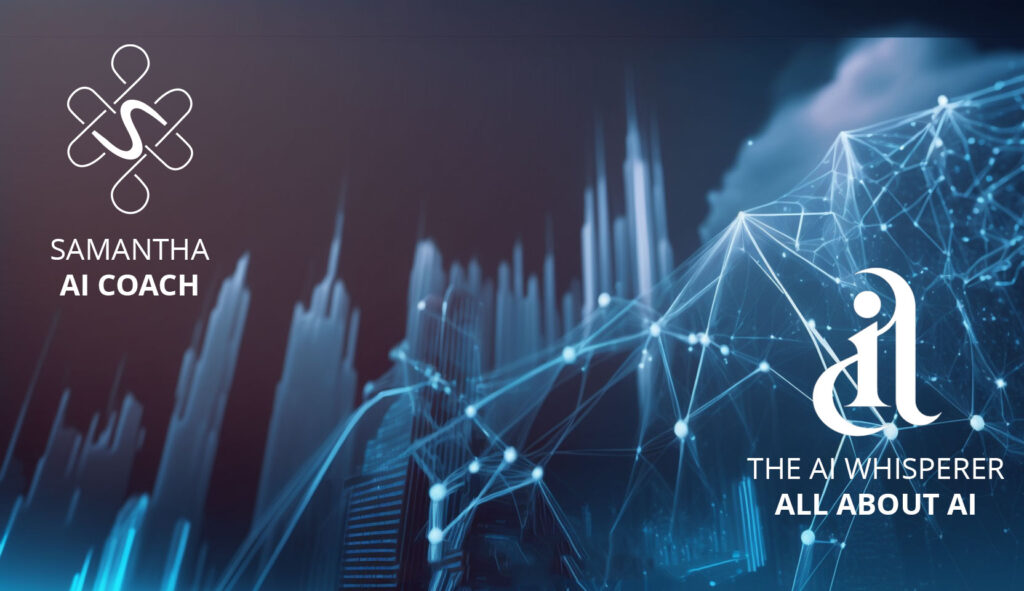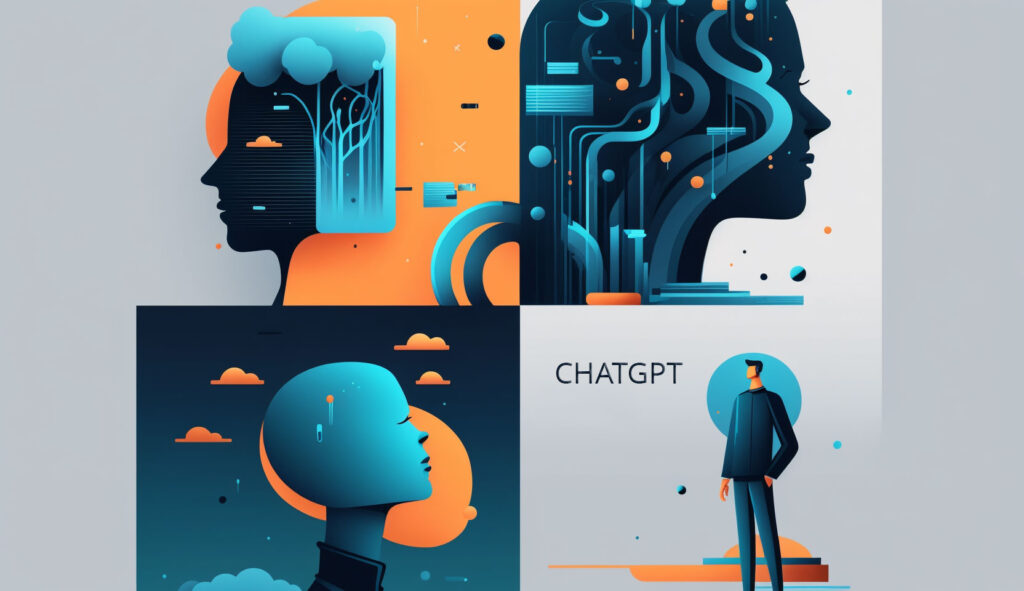
In the buzzing world of tech, a tweet can sometimes reveal a story full of intrigue and surprise. That’s exactly what happened with Greg Brockman’s post, which uncovered a major leadership change at OpenAI. Sam Altman, a key player in this saga, found out about his departure in a move that suggests a unified but sudden decision from the board. Following this, Greg himself faced a role change but still remains an important part of the OpenAI team. The quick nature of these decisions, which were relayed to the team afterward, hints at both urgency and a need for confidentiality. Despite the surprise, the tweet ended on a high note, focusing on the support they’ve gathered and the promise of what lies ahead. Let’s dive into the potential storylines that could have led to this dramatic turn of events.
A New Vision for the Future
Imagine Sam Altman at the helm of OpenAI, a beacon of AI advancement. His goal? To catapult the company into uncharted territories of AI, redefining what’s possible. Altman’s vision could have been about forging paths not just for the present but also for the future, breaking new ground in deep learning and AI ethics.
But here’s the issue: the board might have seen this vision as too big a leap from the present market realities and immediate business goals. Altman, possibly pushing for research projects steeped in potential but fraught with risks, could have found his futuristic outlook at odds with a more conservative, risk-averse board. It’s the classic tale of a visionary possibly outpacing the comfort zone of the decision-makers, leading to a boardroom consensus for a leadership change that’s more in line with current market strategies.
In this narrative, Altman’s exit could be seen as a symbol of the ongoing tension in tech: groundbreaking innovation versus practical business strategy. It poses a critical question – how far should a tech company venture into future possibilities at the risk of straying from its market and stakeholders‘ immediate interests?
Targets in the Rearview
In tech, hitting your KPIs is like hitting the bullseye. Under Altman, if OpenAI missed its mark, it might have signaled to the board a need to change course. Think of OpenAI setting ambitious goals – in product development, market expansion, or financial growth – and falling short. In such a scenario, this shortfall could have been seen as a weakness in Altman’s leadership, calling for a change in direction.
The board’s decision to bring in new leadership, in this case, would be about getting OpenAI back on track, aiming for clear progress and market relevance. It’s a story about the relentless pressure to deliver results and the balancing act between ambitious goals and steady, reliable growth.
The Court of Public Opinion
In today’s digital age, a company’s image can be heavily influenced by public opinion. If Altman ever became the center of a controversy or public backlash, it could have put OpenAI in a tough spot. Let’s say Altman made a polarizing decision or comment – something that didn’t resonate well with the public or the tech community. The backlash in public perception can be rapid and harsh.
Here, the board’s decision to introduce a new leader could be seen as a strategic play – a move to shield the company from further reputation damage and rebuild trust with the public. It’s a reminder of the delicate balance between leadership, public perception, and maintaining a positive corporate image in a world where opinions are formed in the blink of a tweet.
Ethical Dilemmas
Navigating the ethical maze of AI is no simple task. In this scenario, we explore the possibility that Altman’s innovative AI projects, while technologically groundbreaking, might have raised significant ethical concerns. Imagine projects that push the limits of AI, venturing into areas filled with ethical complexities – privacy, job displacement, or AI’s role in critical decision-making. If these projects caused concerns, either within the board or in public debate, it could have triggered a need for a change in leadership.
This scenario paints a picture of a leadership change as a pivot towards more ethically mindful AI development. It’s about finding a leader who can blend technological ambition with a strong sense of ethical responsibility, ensuring that OpenAI’s advancements align with broader societal values and norms.
Investor Influence
In the tech arena, investors aren’t just financiers; they’re influential. In this scenario, if Altman’s strategies were seen as a risk to the company’s returns, investor concerns might have nudged the board towards a leadership change. Picture Altman directing OpenAI towards long-term, exploratory projects – full of potential but with uncertain financial returns. If this direction clashed with investors‘ expectations for more immediate, measurable growth, the board might have leaned towards a leader whose vision aligns more with commercial success and investor satisfaction.
This is a tale of balancing visionary leadership with market demands and investor interests, highlighting the tightrope walk between innovation and financial realism.
Culture and Cohesion
A company’s culture is its heartbeat, and a mismatch here can be just as impactful as any market misstep. In this narrative, we explore the possibility that Altman’s leadership style began to diverge from OpenAI’s foundational values, creating internal strains. Imagine Altman’s approach, while innovation-focused, started to sideline the company’s core values – collaborative decision-making, work-life balance, or the open-source ethos.
This scenario speaks to a leadership change driven by a need to realign OpenAI with its original culture, ensuring it remains a hub for innovation and collaboration. It’s about finding a leader who not only has the technical expertise but also embodies the ethos that makes OpenAI special.
Conclusion: Leadership in Sync with Culture and Vision
As the OpenAI story unfolds, these scenarios highlight a crucial truth in tech leadership: the need for a leader’s vision to harmonize with the organization’s culture and values. In an industry racing towards innovation and ethical responsibility, this alignment isn’t just beneficial; it’s essential.
OpenAI’s next chapter will be about finding this balance. The new leadership will need to drive innovation and navigate the competitive and ethical landscapes while nurturing the values integral to OpenAI’s identity. As OpenAI charts its course, the decisions made today will shape its trajectory and provide insights into the evolving dynamics of leadership and culture in the world of artificial intelligence.


